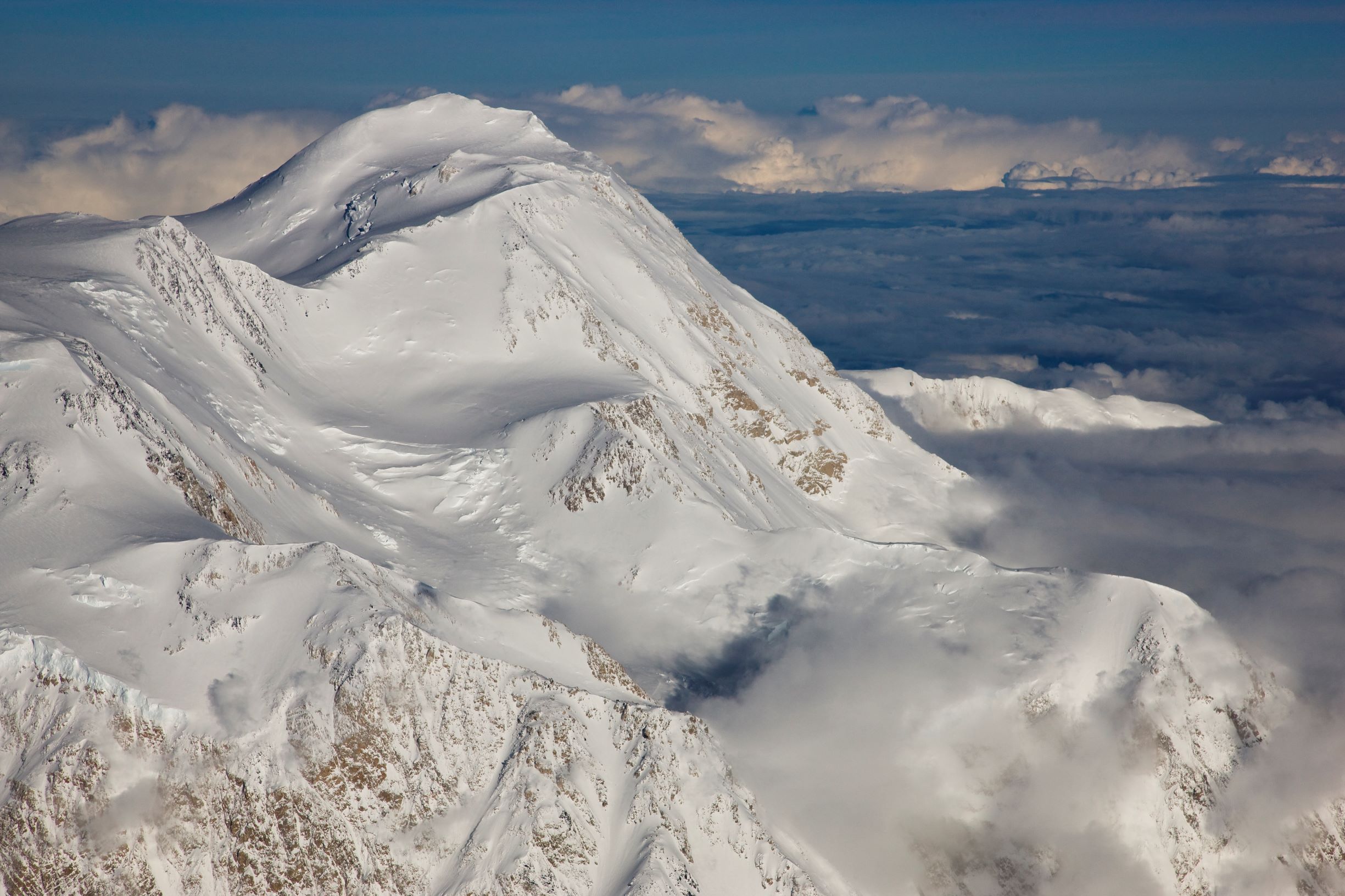 The beautiful, but unforgiving upper elevations of Denali. (NPS Photo/Jeff Pflueger)
The beautiful, but unforgiving upper elevations of Denali. (NPS Photo/Jeff Pflueger)After a busy start to the week here in Talkeetna, we have taken some time to reflect upon some troubling trends that we have seen both from 2021 incidents and after speaking with climbers in the range. It has been two years since we’ve had large numbers of climbers in the range and on the West Buttress, and while we are just as excited as our fellow climbers to have a somewhat normal season, there are a few things we’d like visitors to keep in mind.
We have seen a disturbing amount of overconfidence paired with inexperience in the Alaska Range. While climbers may have a good deal of experience at elevations up to 14,000 feet in the Lower 48, the remoteness and extreme weather we get in the Alaska Range make the experience here more challenging and dangerous. Please do not underestimate conditions, take the time to acclimatize and do not ascend too quickly. We have already had several SAR events related to HAPE this year.
Another disturbing trend we are seeing is people attempting the summit from 14,000 feet. While it is totally reasonable to gain 7,000 feet of elevation in a day in Colorado and summit a 14’er, going from 14,000 feet to the summit of Denali is a whole different undertaking. There are very few mountaineers capable of moving fast enough to accomplish this safely. Exhaustion, untested physiological response to high altitude, rapidly changing weather, and insufficient gear on such a long push are all factors we have seen contribute to injuries and deaths for those attempting a summit out of 14 camp. Monday was a very real and sobering reminder of the dangers of this phenomenon.
It should go without saying that planning from the outset of the expedition to make an attempt to reach the summit from 14,000 feet is ill advised for someone who has never before been to this altitude, particularly in an arctic environment, and has no real conception of how their body will respond to such stresses. However, it also seems that many of the attempts to go to the summit from 14 camp in a single push are often a spur of the moment strategy that develops when an expedition has been pinned down by weather and is running out of time. In other words, it's borne out of desperation, impatience, and summit fever.
An additional factor that we have witnessed in the birth of this strategy is the dissolution of climbing teams at 14,000 feet, where one or more members of an expedition decide that they are not going any higher, but the remaining member (s) are undeterred. In many cases, these determined climbers end up forming loose coalitions with other individuals who they have just met for the first time and who are equally summit-driven. Collectively, this is a recipe for disaster.
It's also our observation that many teams attempting this long and committing summit push have frequently demonstrated a remarkable lack of contingency plans, and a clear psychological -- if not technical -- dependence on the mere presence of other climbing expeditions and the NPS infrastructure. Would you attempt this strategy if you were entirely alone on this mountain? If not, then you shouldn't be doing it now. The teams that have come to grief attempting this feat have, at best, invariably ended up becoming someone else's responsibility, typically in the form of being fed, watered and crammed into the tents of people previously unknown to them at high camp, because they are too exhausted or sick to complete the descent back to their camp at 14,000 feet. A number of climbing teams have had their own summit bids disrupted or ruined by the need to care for these climbers. And in the worst case, these climbers take injurious or even fatal falls, become incapacitated with high altitude sickness, or develop compromised mobility by frostbite, situations which place the lives of professional rescuers and other responding climbing teams at significant physical risk.
We have also seen an increase of skiers aspiring for highly coveted lines off the summit such as the Messner. High elevation peaks in the Alaska Range are often wind-scoured with low snowpack, making for highly challenging, unforgiving ski conditions. Even the most experienced skiers in Lower 48 terrain get in over their heads in the Alaska Range, and conditions can change rapidly from the top to the bottom of a 5,000-foot ski run. Conditions need to be perfect for skiers to pull this off safely.
Finally, we are seeing climbers come in with some misconceptions about the infrastructure in place on Denali. Even though the West Buttress is the most popular and well-traveled route on Denali, you are still mountaineering in a remote, high-altitude environment in the wilderness. Rescue is not guaranteed, and your emergency plan should not be contingent upon the NPS. Rescuer safety will always be our first priority, and weather or lack of resources often preclude us from coming to help. The NPS policy is to only respond to immediate threats to life, limb, or eyesight. Anything that we deem falls outside these categories, we will leave you to figure out on your own, and this year we have already turned down rescue requests that don’t meet these criteria. Additionally, while the NPS and guide services do maintain the fixed lines and some running pro, you should carry your own ice screws and snow pickets and be prepared to place your own protection. Do not rely on someone else to maintain your group’s safety.
The bottom line: do not let the crowds on the West Buttress lull you into a false sense of security. Be prepared and take the objective hazards of this climb seriously. You do not want to be the subject of the next Denali National Park news release.
